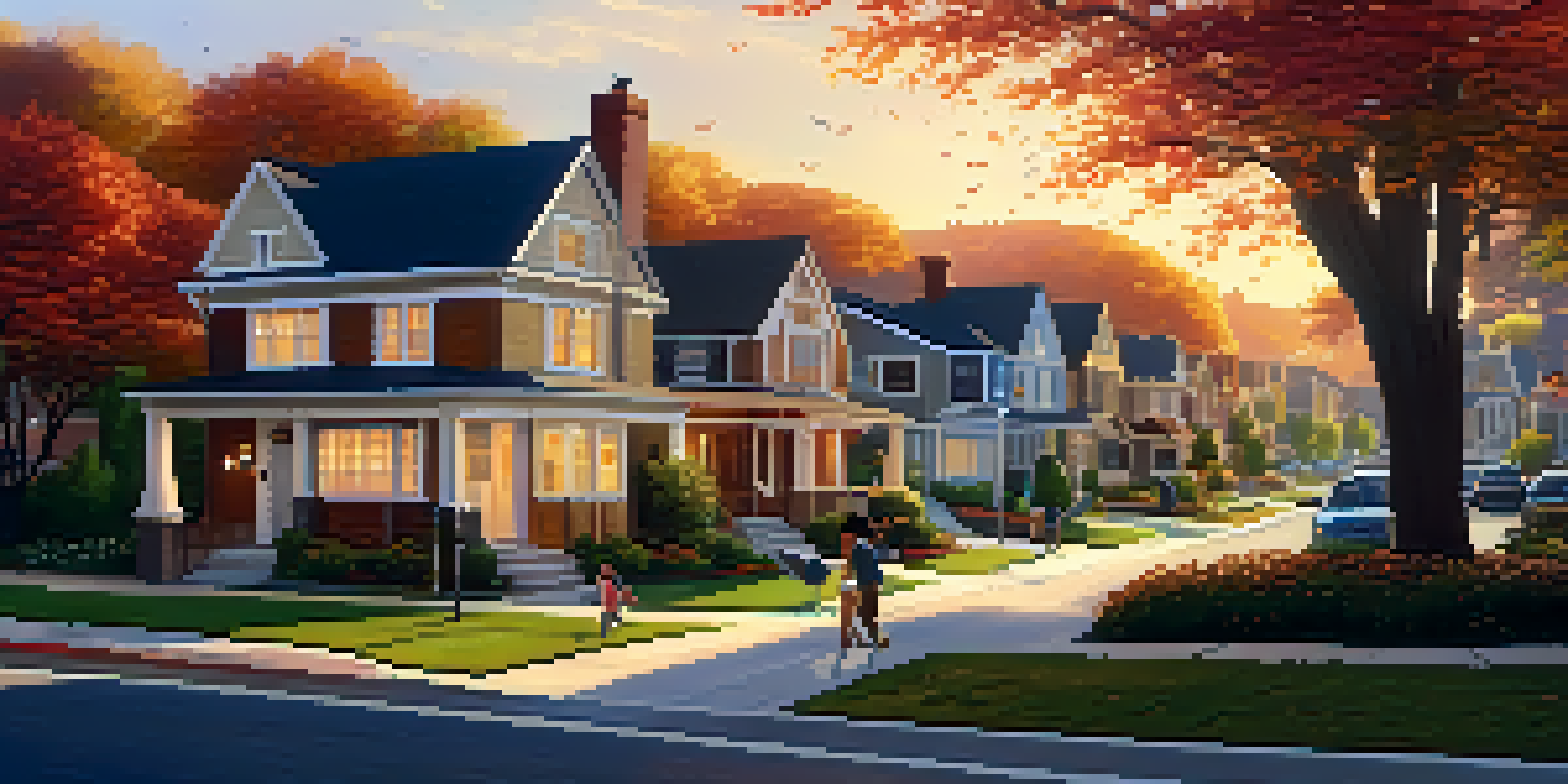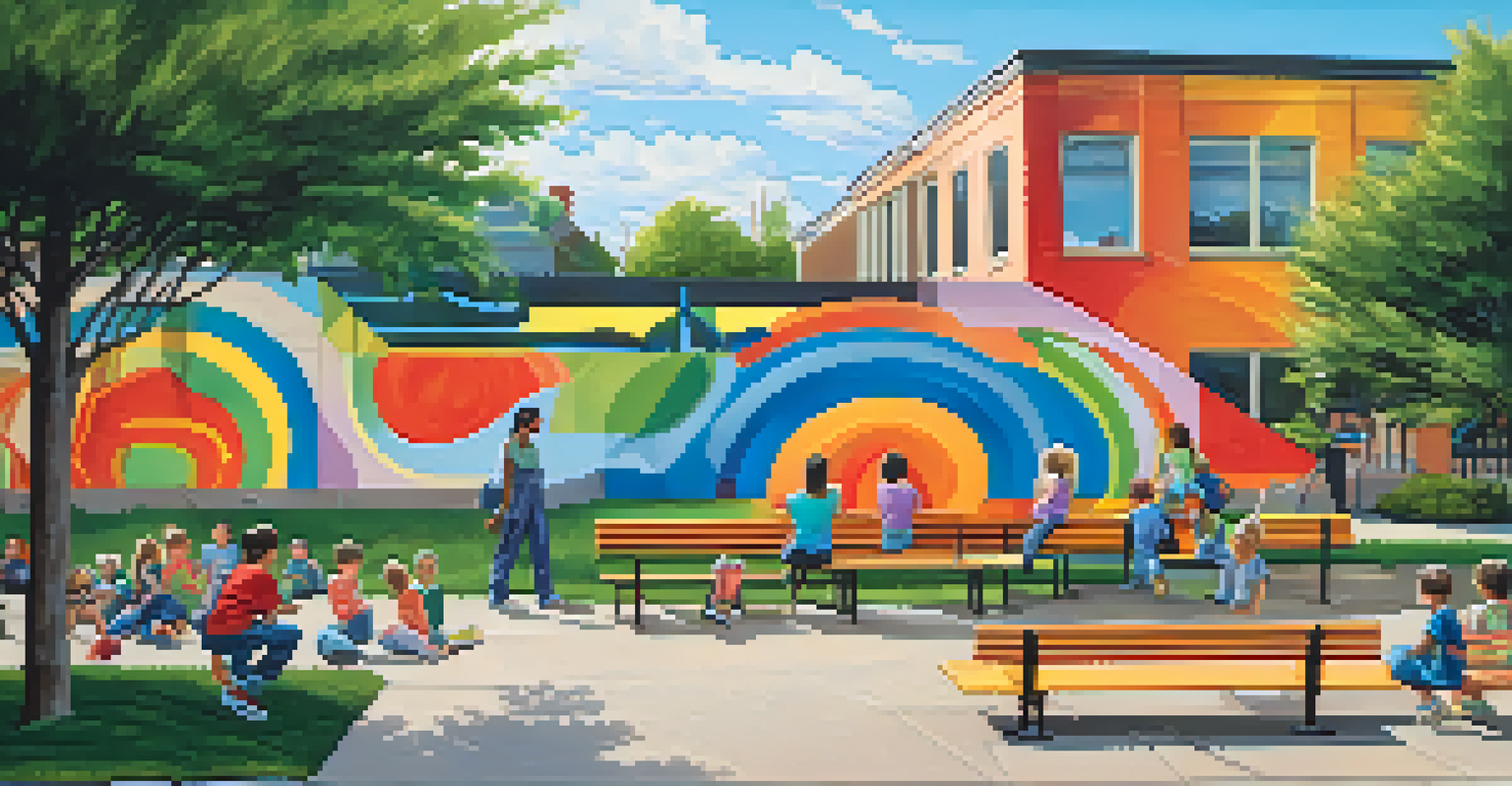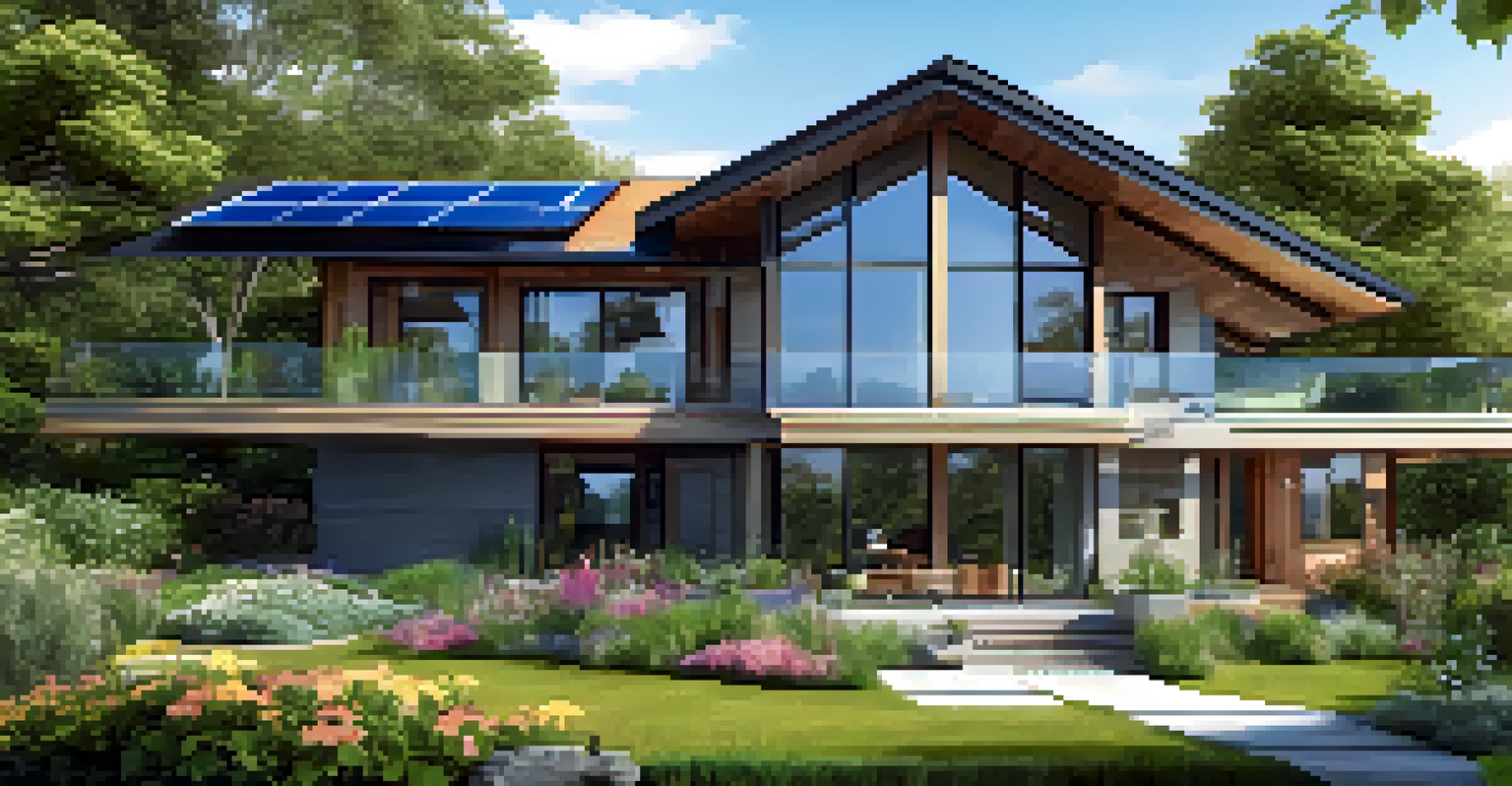Architecture as Art: Suburban Design and Identity

The Essence of Architecture as Art in Suburbia
Architecture often transcends mere functionality; it embodies artistic expression. In suburban areas, design choices reflect not just aesthetics but the identity of communities. This blend of practicality and beauty makes architecture a crucial component of suburban life.
Architecture is the art of how to waste space.
When you drive through a neighborhood, the homes, parks, and even the roads tell a story about the people who live there. Each architectural decision—from the color of the siding to the style of the roof—contributes to a collective identity that residents cherish. It's like a canvas where every brushstroke adds to a larger picture.
Thus, viewing architecture as art invites us to appreciate not only the structures themselves but also the emotions and narratives they evoke. This perspective can foster pride and a sense of belonging within suburban communities.
Historical Context: Evolution of Suburban Architecture
To understand how suburban architecture has evolved, we must look back at its roots. The post-World War II era saw a boom in suburban development, driven by the desire for homeownership and the American Dream. This period established design norms that would shape future communities.

Initially, suburban homes were quite uniform, focusing on efficiency over individuality. However, as time passed, architects began to experiment with styles and materials, reflecting changing tastes and cultural influences. This shift also aligned with a growing emphasis on sustainability and environmental consciousness.
Architecture as Community Identity
Suburban architecture serves as a canvas that reflects the identity and emotions of its residents.
Today, a variety of architectural styles coexist in suburbs, from traditional craftsman homes to sleek modern designs. This diversity not only enhances visual appeal but also allows residents to express their unique identities through their living spaces.
The Role of Community in Shaping Design
Architecture doesn't exist in a vacuum; it's deeply intertwined with community needs and desires. Engaging residents in the design process ensures that the built environment reflects their values and aspirations. This collaborative approach can result in more meaningful and relevant spaces.
The best way to predict the future is to create it.
For example, community input can guide decisions on public parks, gathering spaces, and even housing developments. When residents feel heard, they're more likely to embrace and take pride in their surroundings. This sense of ownership can lead to enhanced community spirit and a stronger social fabric.
Ultimately, the role of community in design highlights the importance of inclusivity. By valuing diverse voices, architects and planners can create environments that resonate with a wider range of experiences and identities.
Sustainable Design: An Artistic Responsibility
As we face global environmental challenges, the intersection of art and architecture increasingly emphasizes sustainability. Designing with nature in mind not only enhances aesthetic appeal but also respects the ecosystem. This approach is becoming a crucial part of suburban identity.
Sustainable design involves using materials that are eco-friendly, incorporating energy-efficient systems, and planning for long-term environmental impact. For instance, homes that feature green roofs or solar panels not only look innovative but also reduce their carbon footprint.
Sustainable Design as Art
Incorporating sustainability into architectural practices not only enhances aesthetic appeal but also respects the environment.
By integrating sustainability into architectural practices, we create spaces that are not only beautiful but also responsible. This commitment reflects a growing awareness of our role in protecting the planet for future generations, adding another layer to suburban identity.
Artistic Elements in Suburban Design
Artistic elements in suburban architecture can manifest in various forms, from decorative facades to unique landscaping choices. These details contribute to the overall character of a neighborhood, making it visually engaging and inviting. Think of it as dressing up your home; the right elements can transform the mundane into the extraordinary.
Public art installations, murals, and sculptures also play a significant role in enhancing suburban spaces. They serve as focal points, sparking conversation and encouraging community interaction. A vibrant art scene can elevate a suburb's identity, making it more attractive to residents and visitors alike.
By incorporating art into suburban design, communities can foster creativity and self-expression. This not only beautifies the environment but also enriches the lives of those who inhabit it, creating a more vibrant social atmosphere.
The Influence of Technology on Architectural Design
In today's digital age, technology profoundly impacts architectural design. Innovations such as 3D printing, virtual reality, and building information modeling (BIM) are changing how architects conceptualize and execute their visions. This technological evolution opens up new avenues for creativity and efficiency.
For example, virtual reality allows potential buyers to experience homes before they’re built, ensuring that designs meet their expectations. Additionally, technology can streamline the construction process, reducing waste and promoting sustainable practices. This fusion of technology and art is reshaping suburban landscapes.
Technology Shapes Suburban Design
Advancements in technology are transforming architectural design, allowing for greater creativity and efficiency in suburban planning.
As technology continues to advance, the potential for innovative designs will only grow. This evolution challenges architects to think outside traditional boundaries and embrace new artistic expressions, ultimately enriching suburban identity.
Preserving Identity Amidst Change
As suburbs evolve, balancing growth with the preservation of identity becomes essential. Rapid development can sometimes overshadow the unique characteristics that define a community. Striking this balance requires thoughtful planning and a commitment to honoring local history and culture.
For instance, incorporating historical architectural elements into new developments can create a sense of continuity. This approach ensures that while suburbs adapt to modern needs, they also retain their distinctiveness and charm. It's like adding a new chapter to a beloved book without losing the essence of the story.

Ultimately, preserving identity amidst change is about fostering connections—between past and present, community and environment. This commitment can lead to vibrant, cohesive neighborhoods that celebrate their unique heritage while embracing the future.